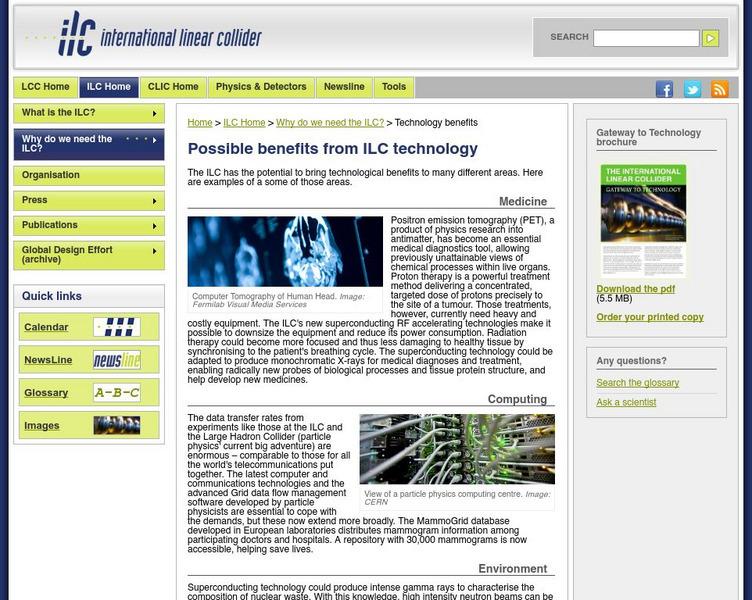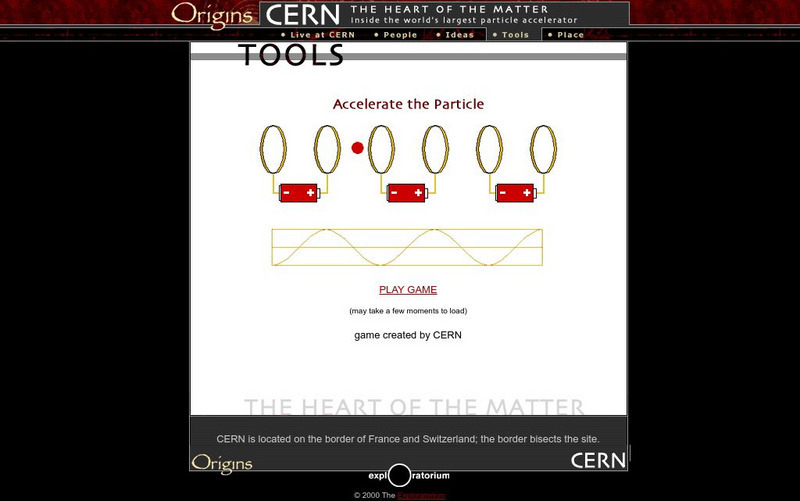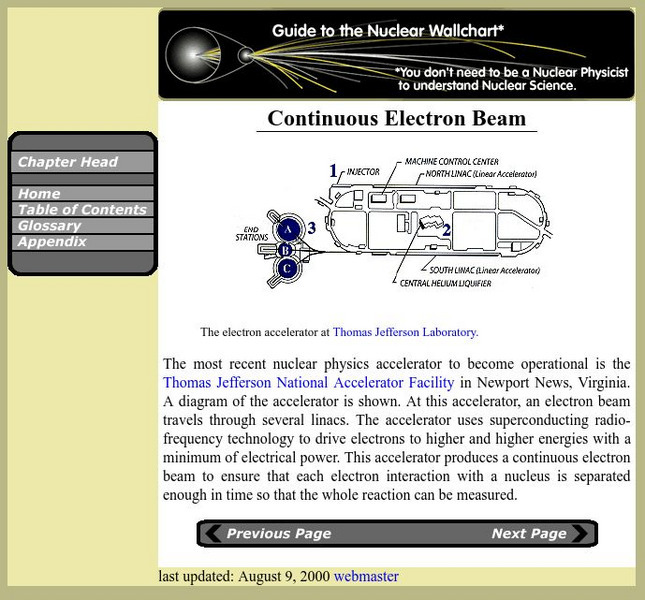Exploratorium
Exploratorium: Cern: The Proton Synchotron
From CERN, the world's largest particle accelerator, this site contains a description of the Proton Synchotron, a device used to accelerate protons for use in other machines in the accelerator complex.
Symmetry Magazine
Symmetry Magazine: Explain It in 60 Seconds: The International Linear Collider
The International Linear Collider, when built, will be larger than the Large Hadron Collider near Geneva. A short description is given here. "Explain It In 60 Seconds" is an article series that aims to summarize in a few paragraphs the...
Symmetry Magazine
Symmetry Magazine: Explain It in 60 Seconds: Luminosity
Luminosity, described here, is a scale for measuring how efficiently a collider works. "Explain It In 60 Seconds" is an article series that aims to summarize in a few paragraphs the meaning of different concepts in particle physics.
Symmetry Magazine
Symmetry Magazine: Explain It in 60 Seconds: Light Sources
Light sources are usually synchrotrons, accelerators that are used to produce intense light beams for research purposes. "Explain It In 60 Seconds" is an article series that aims to summarize in a few paragraphs the meaning of different...
Symmetry Magazine
Symmetry Magazine: Explain It in 60 Seconds: Magnet Quench
A magnet quench, explained here, is a routine event that happens within a particle accelerator that can require the accelerator to be shut down for a period of repair, losing valuable research time. "Explain It In 60 Seconds" is an...
Symmetry Magazine
Symmetry Magazine: Explain It in 60 Seconds: Particle Accelerators
Particle accelerators and what how they are used in research are explained briefly but succinctly here. "Explain It In 60 Seconds" is an article series that aims to summarize in a few paragraphs the meaning of different concepts in...
Other
Desy: Aachen the First Operational Linac
A chapter of an autobiography of Rolf Wideroe, an important figure in the development of accelerators. This chapter discusses the first linear accelerator.
Other
International Linear Collider: Possible Benefits From Ilc Technology
Research with linear colliders may enormously benefit fields such as medicine, computing and the environment. Examples include medical proton therapy and the potential of being able to render nuclear waste harmless. A wonderful side...
Exploratorium
Exploratorium: Cern: Linear Accelerator
From CERN, the European Center for Nuclear Research, this site provides a brief description of the physics underlying how a linear accelerator works.
Exploratorium
Exploratorium: Cern: Accelerate the Particle
Contains a game which illustrates the manner in which changing electromagnetic fields can accelerate charged particles in a linear accelerator.
Lawrence Berkeley National Laboratory
Berkeley Lab: Van De Graaff
Featured is a brief description of the Van de Graaff accelerator and its uses.
Lawrence Berkeley National Laboratory
Berkeley Lab: Linear
Use this site to learn about the invention of the linear accelerator and how it works.
Lawrence Berkeley National Laboratory
Berkeley Lab: Continuous Electron Beam
A diagram of the Thomas Jefferson National Accelerator Facility in Newport News, Virginia.
Stanford University
Stanford University: Accelerators
This site is provided for by the Stanford University. Part of SLACs virtual visitors center outlining the construction and operation of a linear accelerator, including descriptions of each of the major parts. Good physics content for...











